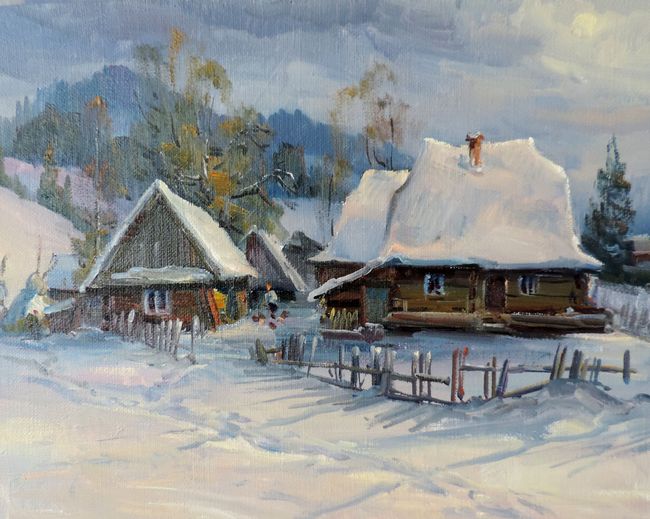“I want to show Zakarpattia how I saw it and pass it to future generations”
“I want to show Zakarpattia how I saw it and pass it to future generations”
While admiring extremely sensual and positive emotion-promoting paintings of the famous Zakarpattian painter Vasyl Svaliavchyk, I plunge into the world of my carefree childhood on every occasion. Here, the viewer gets to see spruce-timbered huts that cling to a steep hill in the village’s upper neighborhood just beneath the Beskid Mountains. It seems that the doors will squeal and open in a moment, and the old bosorkania (witch) Ivanykha will go out on her porch. Here, one can see the Presentation of the Holy Mother of God Church, built in the 17th century without a single nail being used. Next, a snow-covered Verkhovyna (Carpathian Highland) village is pictured, with a pathway barely visible which had been trodden by carolers on Christmas night...
These fantasies serve as a kind of continuation running from the images depicted in Svaliavchyk’s works, because, as he himself admits, his favorite location and creative laboratory is my home Mizhhiria raion, while the artist is a true art guardian of the traditionalist Verkhovyna. A native of the lowland Mukacheve raion, Svaliavchyk came to love the highlands not only for the splendid and unique scenery, but above all for the kindness, openness, and sincerity of local people, many of them his friends, including fellow local artists united in the Carpathian Colors creative union, which past year nominated the artist for Ukraine’s highest artistic distinction.

A student of such prominent representatives of the Zakarpattia school of painting as Anton Kassai, Havrylo Hliuk, Ivan Ilko, and Yanosh Shutiev, the People’s Artist of Ukraine Svaliavchyk, whose works adorn museums and private collections in Ukraine, Slovakia, the Czech Republic, Hungary, Germany, the US, China, Canada, the UK, Australia, Japan, Russia, and Switzerland, is now at a high point of his creative ascent. He appears before the audience as a multifaceted artist who manages to capture on canvas with surprising success the saturatedly colorful Carpathian fall with its myriad of purple hues, the early, still shy pale-green spring, and the summertime luxuriant flowering of alpine meadows. However, it is the Carpathian winter landscapes that Svaliavchyk is probably strongest at. He himself admits that painting Carpathian horizons on a frosty day, when the palette and easel are covered in slowly falling snowflakes, is an especially driving experience for him. And the work has to be done as soon as possible, since one just cannot keep working for long amid Verkhovyna frost...

“Painting winter landscapes and water spaces is the most difficult task. It is because one needs to paint air in winter, and the riverbed when painting a clear-watered Carpathian stream. The nature is the best artist, since it has created it all, while the task of the artist is to locate and capture this beauty. I do not like to paint depressive pictures. Especially so when the creator invents a tragedy or wants to emphasize how difficult the world is to live in. The artist’s calling is not there. The artist must create a good mood, evoke positive emotions, not depress the viewer’s soul,” Svaliavchyk said.

Svaliavchyk believes that today’s attempts to question the very existence of the Zakarpattia artistic school reflect a fruitless effort of those who have been unable to make their contributions to the arts, and considers the school’s continuity to be its strongest point. “Our predecessors immortalized the unique beauty of our region. I want to continue this process, to depict and show Zakarpattia how I saw it and pass it to future generations,” Svaliavchyk said. From this perspective, a distinct section of the artist’s creative heritage which is linked to wooden churches of Zakarpattia is of special importance. His images show ancient shrines of Pylypets, Roztoka, Bukovets, Huklyve, Kolochava, Nehrivets, Oleksandrivka, Sokyrnytsia, Kolodne, Yasinia, Kostryn, and Uzhok...

Newspaper output №:
№3, (2017)Section
Time Out





